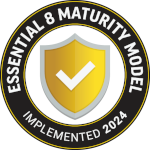Business is actually really simple, but it’s often made more complicated than it needs to be. We think our business is unique from someone else’s business, but fundamentally they’re really not that different. Whether it is business or private life – you still need to have some form of plan, control over cash and someone to help if things don’t work out. Plan it, forecast it, execute it. Just like Xmas!! And that’s what we call the Trifecta.
The trifecta (your winning ticket!) is made up of what we call business best practice standard. It starts with the operational business PLAN that tells us where we are and where we are going. Once we have the plan, we then convert that into numbers which is what we call the FORECAST, from which we measure and manage our progress towards. Finally, and the most important part of the trifecta is EXECUTION.
Within the trifecta, there are the 4 main components of every business – People, Cashflow, Strategy and Execution. Business is a collection of systems that are run by its people. People are the users of the systems to get the results and business owners or managers often think people are the biggest weakness, but this is rarely the case. If things aren’t happening it is probably the systems.
So let’s break the Trifecta down.
Planning
Whether you know where you are or not, a simple exercise called a SWOT analysis gives a very accurate picture of where you are right now. We then look at where you want to be in 1,2, 5 or maybe even 10 years’ time depending on the stage of your business. Joining the now to the future is our plan. Making the plan can take anywhere from half a day to 2 full days and it’s best to involve all the key people – interested owners, shareholders, owners and key managers. Getting people’s buy-in and input to the plan early is always gives the best possible outcome.
So often people fall into the trap of writing the plan and then shelving it, never to be seen again! Ideally, you should be looking at your 3-6 monthly, it’s an agile document, a base from which things can change. The major end game may not change but how we get there most certainly will.
If 2020 has taught us anything it is that nothing stays the same. When a crisis arises, it throws us. Our advice? Don’t panic, take your time. Pause to understand what this means. Your response separates out a good business from a temporary business.
Trust the plan, figure out what you can and can’t do and make the business work for you, not the other way around.
Forecasting

Converting the plan, which is written in English, into numbers. It can seem daunting, but it really can be simple. But we will ask a whole bunch of questions! Things like what are your ACC levies. Let’s talk about wages, what will your team look like in 3 months? etc. You don’t need anything other than a good knowledge of what has happened and an idea of what might happen. This basically gives us context to ask the questions, like can we bring on new people, relocate etc?
We are often asked how to ensure the forecast is achievable and manageable and to be honest the first time we do it, it’s largely a guess. This often results in 20-30% error, the 2nd time we do it the error is much smaller and very quickly the forecast becomes highly accurate. It’s a progressive approach as we learn. We sit down with business owners on a regular basis, every 1-2 months and discuss where we are at and what we have learnt, it’s not the forecast giving value, it’s the people behind it giving the value and if it’s completely out we should know it is out really soon.
Execution
This is the scariest part for businesses and often the part that is done the poorest. We liken your business to a rally car – you have the dashboard, the speedo and the GPS. The GPS is the plan the dash is the forecast and the co-driver is us. We’ve said it before and we’ll say it again. The biggest weakness in business is execution – 100%. Get yourself a good co-driver!
And apologies for the crudeness, but that co-driver or execution specialist can’t be someone you share a pillow with! If execution fails, we revise our plan, strategies and budgets. It’s never set in stone, it’s always fluid and moving. From the biggest failures come experience and learnings to move forward.
Your co-driver will revisit the execution plans every 3 months, potentially monthly or maybe 6 monthly if very stable. Sooner rather than later makes sense. Accountability is key and we can help assign this and then keep on task.
So, let’s go, make a plan, forecast it and execute – co-driver by your side.






